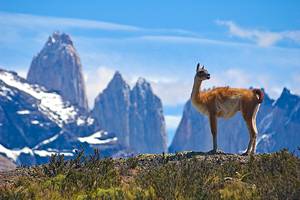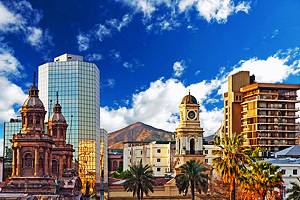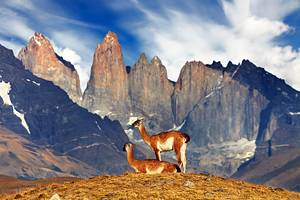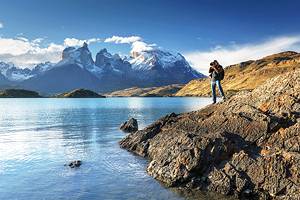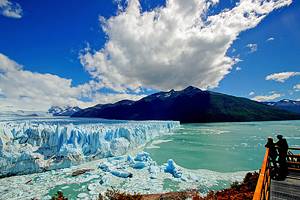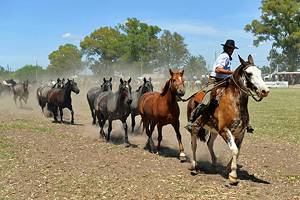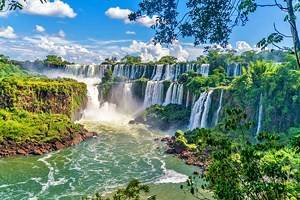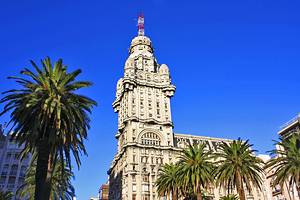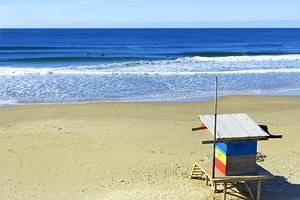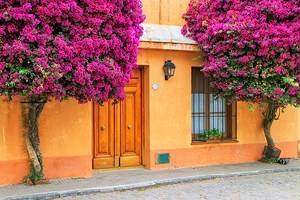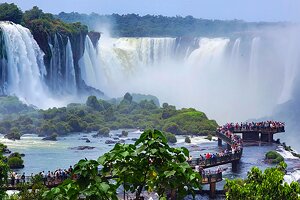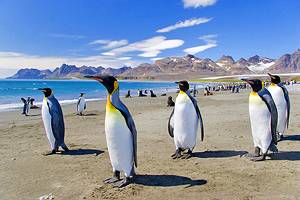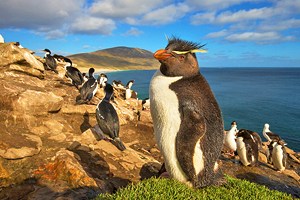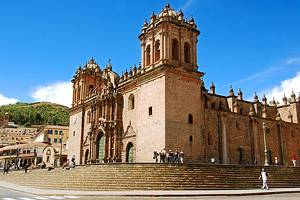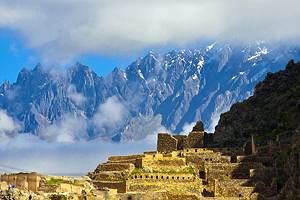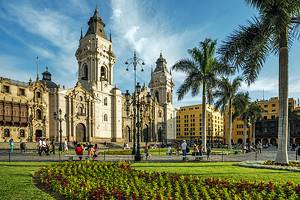Chile in Pictures: Beautiful Places to Photograph
Few countries offer the chance to hike a glacier, trek to the top of a volcano, visit the driest desert on Earth, and experience some of the greatest biodiversity on the planet – and to do it all within a few kilometers of each other. The photography possibilities are as diverse as the landscape.
Chile is separated from Argentina by the Andes, the longest continental mountain range in the world. And one of the most mysterious islands in the world, Easter Island, sits just a few kilometers off the coast of Chile. With so much to see and explore, it's no wonder Chile is one of the most stunning destinations in South America. See more of the country in pictures with our list of beautiful places to photograph.
- Torres del Paine National Park
- Mano del Desierto
- Miscanti Lake
- Rano Raraku, Easter Island
- Carretera Austral
- National Park Laguna San Rafael
- The Atacama Desert
- National Park Huerquehue
- Elqui Valley
- Marble Caves
- Puritama Hot Springs
- Villarrica Volcano
- Saltos del Laja
- Ojos del Caburgua
- Puerto Natales
- General Carrera Lake
- Salar de Atacama
- Geysers El Tatio
- Cape Horn
- Lake Chungara and Parinacota Volcano
Torres del Paine National Park
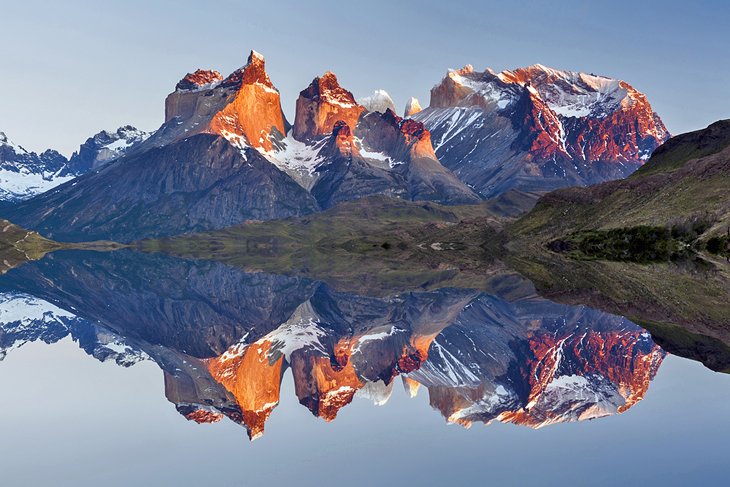
Sitting at the heart of Patagonia, Torres del Paine is home to glaciers, icy rivers and lakes, and towering mountains covered in subpolar forests. A rugged landscape of icy lakes and soft glaciers makes this is a perfect destination for hiking and boating. The park has some of the best hiking trails in Chile. You may see guanacos, pumas, and foxes, which are the most common mammals in the park.
- Read More: Tourist Attractions in Chile
Mano del Desierto
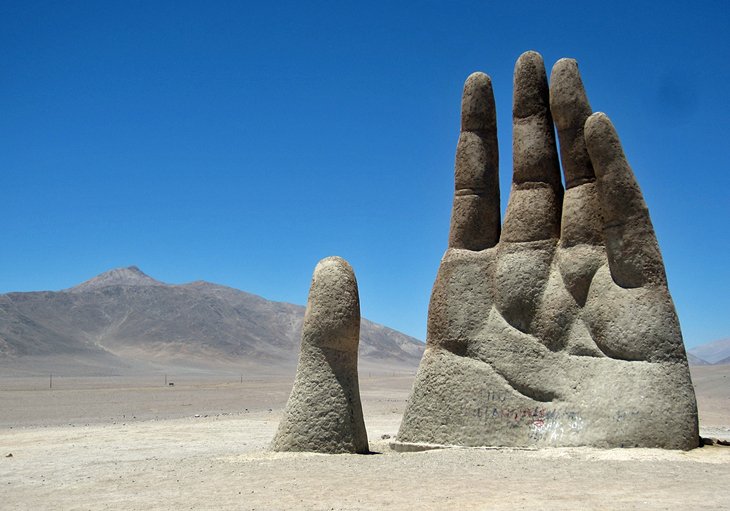
The 11-meter-tall iron and concrete hand stands as one of the most distinctive sights in the Atacama Desert. Sitting at an altitude of 1,100 meters above sea level, along a dusty highway, the sculpture is meant to represent human helplessness.
Miscanti Lake
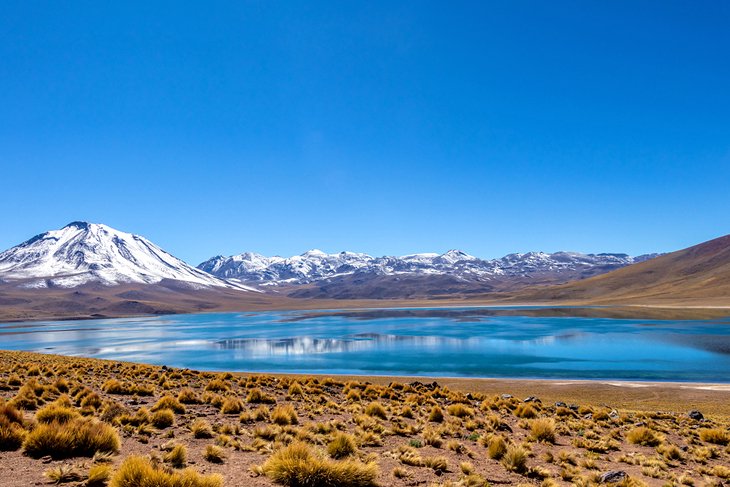
Deep blue and arrowhead-shaped Miscanti Lake is a slightly saline lake in northern Chile. Miscanti Lake sits against a background of mountains, including the towering 5,622-meter-tall Cerro Miscanti. The average annual temperature is just over two degrees Celsius, and the surface of the lake is often covered in a shimmering, thin layer of ice in winter.
Rano Raraku, Easter Island
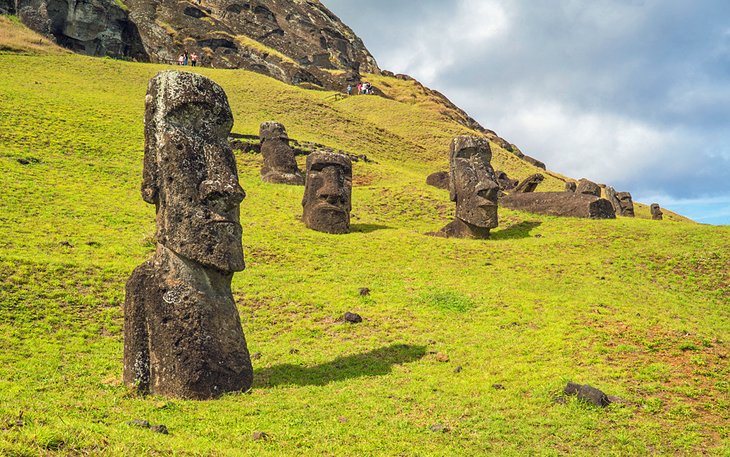
Easter Island, just off the coast of Chile, is stunning in its own right – but the Rano Raraku volcanic crater tops it all. Most of the stone used to build the statues on Easter Island comes from the quarry in this area. Just outside the quarry, a number of moai – monolithic human figures – buried up to their shoulders stand guard.
Carretera Austral
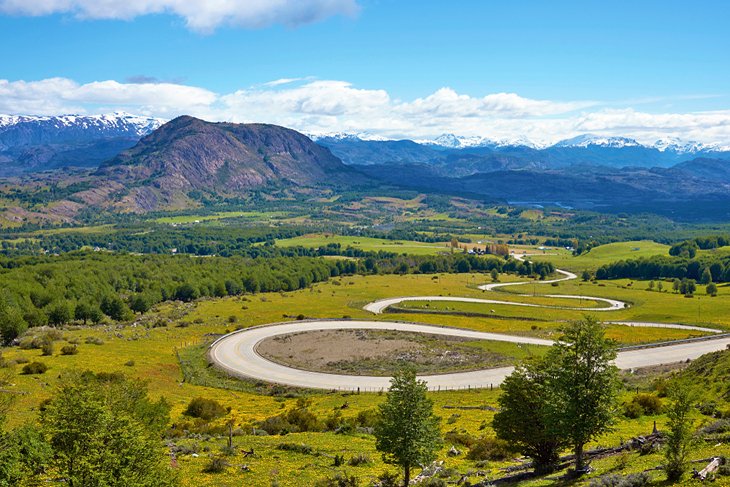
Chile's Route 7 is best known as "carretera austral" (southern highway). The road runs through Patagonia for 1,240 kilometers, and traveling the entire length of it requires three ferry rides in addition to lots of driving. Much of the road remains unpaved, flanked by forests, glaciers, and towering mountains.
- Read More: Hiking Trails in Patagonia
National Park Laguna San Rafael
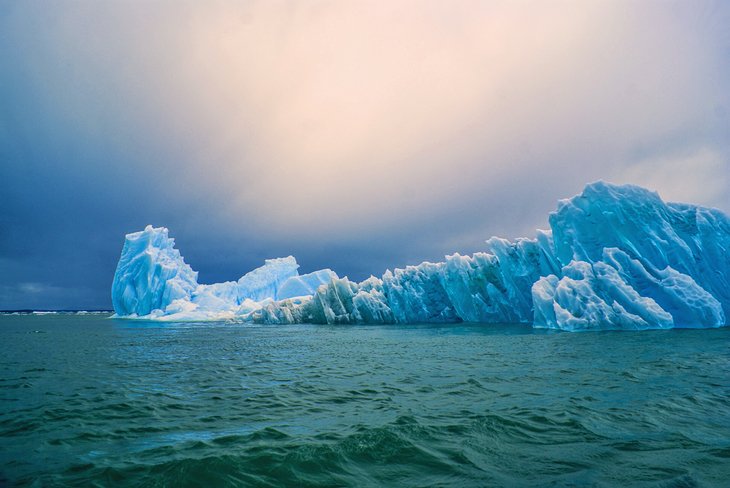
Laguna San Rafael National Park covers over 17,000 square kilometers and is home to the Northern Patagonian Ice Field, the second largest mass of ice outside the Poles. The fjord at the edge of the park is home to dolphins, seals, and sea lions.
The Atacama Desert
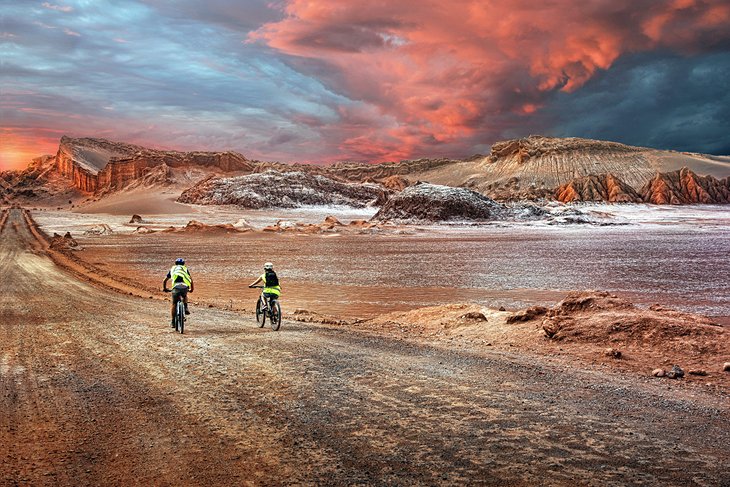
The Atacama Desert is the driest non-polar desert in the world. It extends over 1,000 kilometers of dusty, stony terrain that's very similar to the soil of Mars. Atacama's otherworldly appearance makes it a favorite of NASA, which often tests space equipment here.
National Park Huerquehue
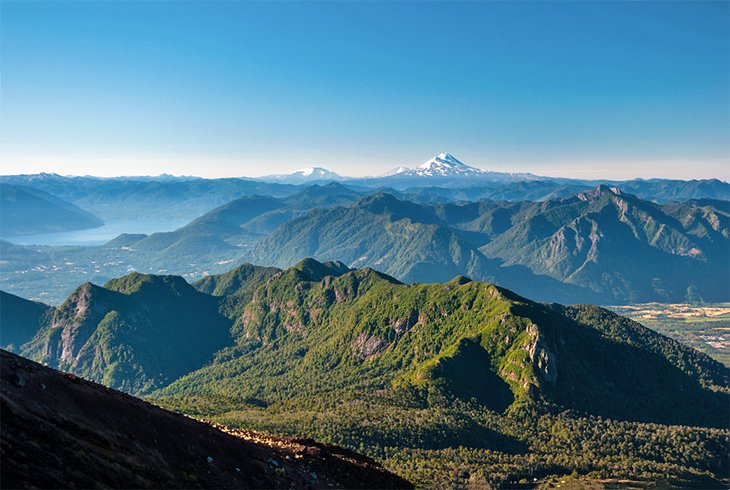
Chile's most famous trekking destination is so for a reason: icy mountain lakes, plenty of waterfalls, and well-marked trails are everywhere. Wild camping is allowed, and those ready to chase adventure can try climbing the park's highest peaks: Araucano at 2,000 meters and San Sebastian at 1,800 meters. From the top, open views of the river valleys, canyons, and green hills abound.
Elqui Valley
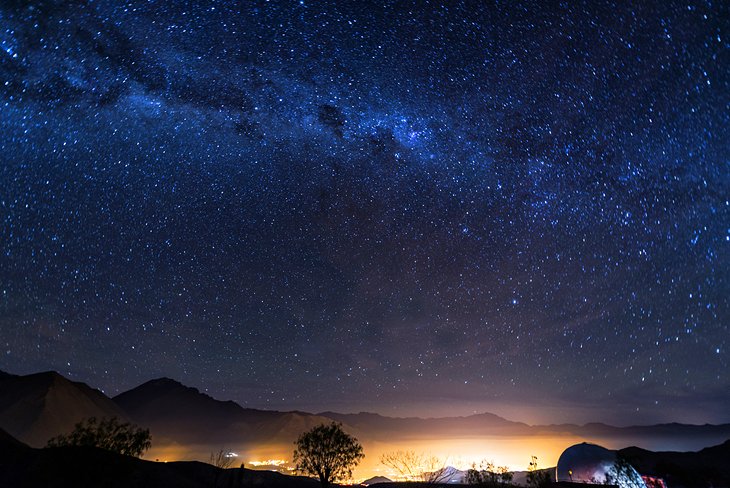
The Elqui Valley is a popular destination for astronomers and UFO chasers and one of the best places in South America to watch the stars due to its isolation and cloud-free skies. The valley sees over 320 days of sunshine a year with little rain.
Marble Caves

Accessible only by boat, the marble caves are a 6,000-year-old stunning sight of swirling blues. The caves are located in a glacial lake, whose azure waters reflect on the cave's walls and cause the famous blue hues. Between September and February (the hottest months), as the ice melts, the color's almost turquoise.
Puritama Hot Springs
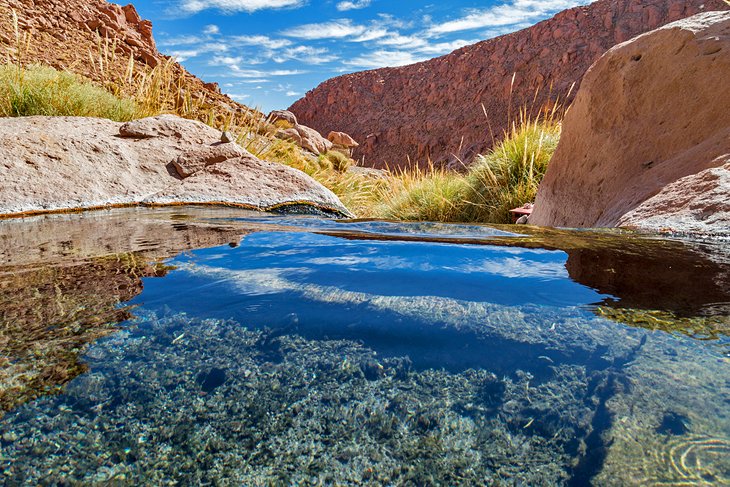
Located deep in a canyon in the Atacama Desert, the eight pools that make up the geothermal Puritama Hot Springs have been used for medicinal purposes for centuries. Archeological sites and waterfalls surround the area and attract outdoor lovers year-round.
Villarrica Volcano
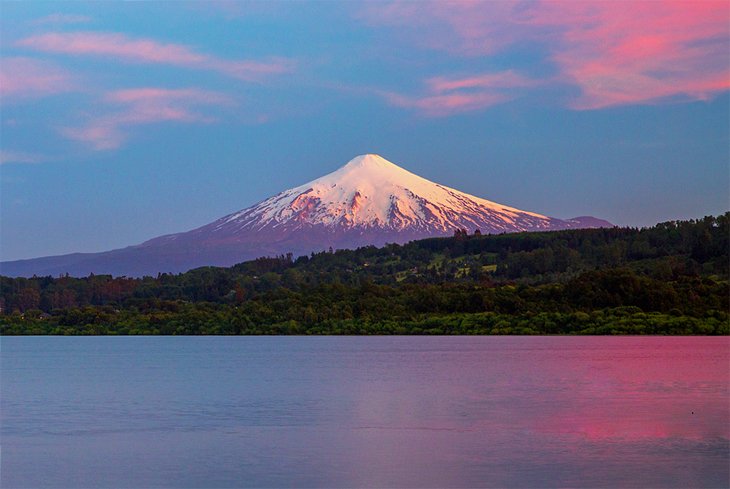
Located right against a clear blue lake, Villarrica is one of Chile's most active volcanoes. A much-loved destination for outdoor enthusiasts, Villarrica offers excellent climbing in summer and skiing in winter (July to September). For a closer look at the action, it's possible to take a helicopter ride over the active crater.
Saltos del Laja
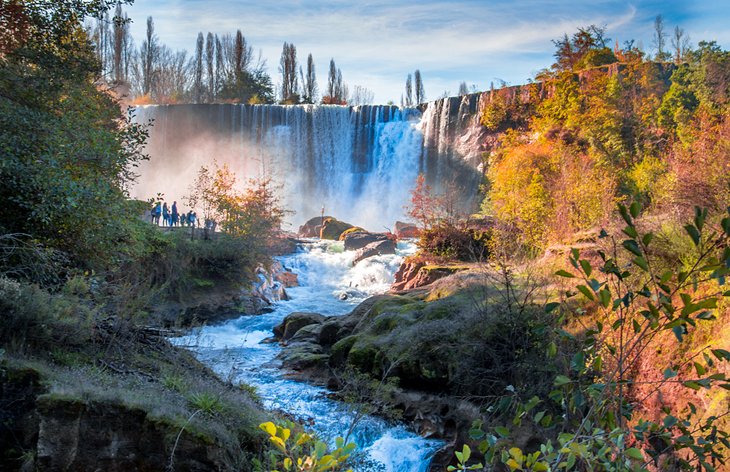
The Laja Falls (technically translated as the "Laja jumps") are a group of four horseshoe-shaped waterfalls that sit next to each other with a total width of 455 meters. The waterfalls roar down into a rocky canyon and transform into rapids.
Ojos del Caburgua

Deep in the jungle and surrounded by thick vegetation, the striking 15-meter-tall waterfall isn't even the main attraction here. It's the two deep-blue natural pools down below, perfect for swimming, that attract all the attention. Long wooden walkways crisscross around and over the water for closer views.
Puerto Natales
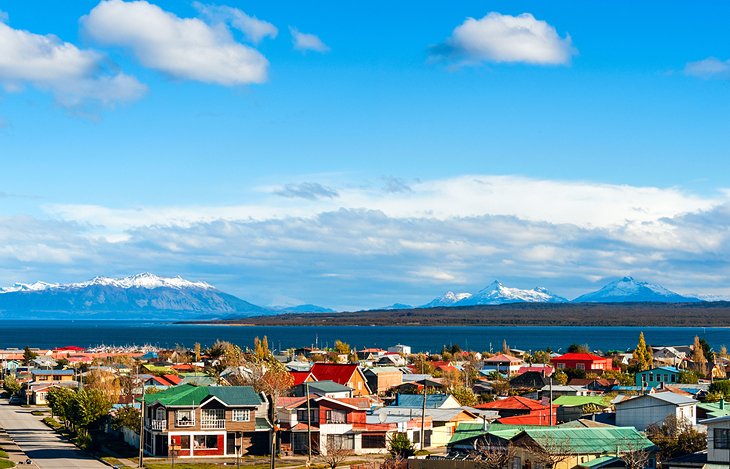
Once a quiet fishing port, the town of Puerto Natales has become a popular tourist destination because of its picturesque surroundings. Fjords, thick forests, and blue glaciers form the gateway to trekking in Torres del Paine national park, just minutes away.
General Carrera Lake

Shared by Argentina and Chile, this massive lake with a surface area of 1,850 square kilometers is known as Lake Buenos Aires on the Argentinian side and General Carrera Lake on the Chilean side. Featuring a sunny microclimate, plenty of kayaking and sailing opportunities, and picture-perfect turquoise waters, General Carrera is one of the best lakes in Chilean Patagonia.
Salar de Atacama
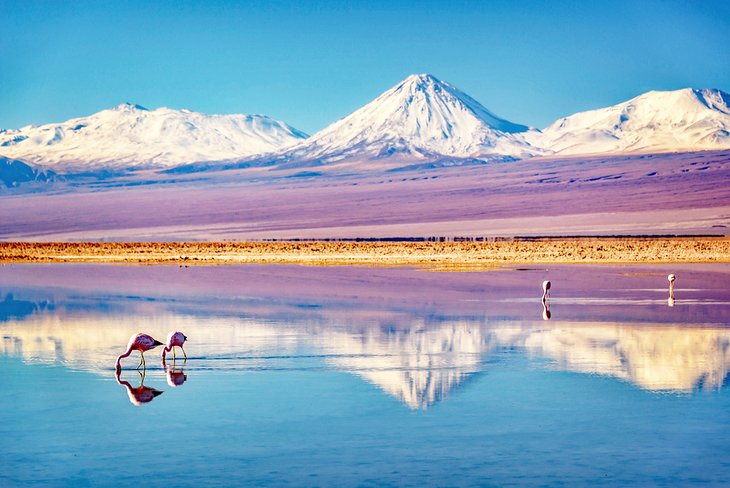
The third-largest salar (salt flats) of the world is located near the town of San Pedro de Atacama and surrounded by stunning mountains and volcanoes, as well as deep blue lagoons. Located about 2,300 meters above sea level, the salar has salt concentrations of up to 28 percent in some areas – which means you could float in the water just as you do in the Dead Sea.
Geysers El Tatio
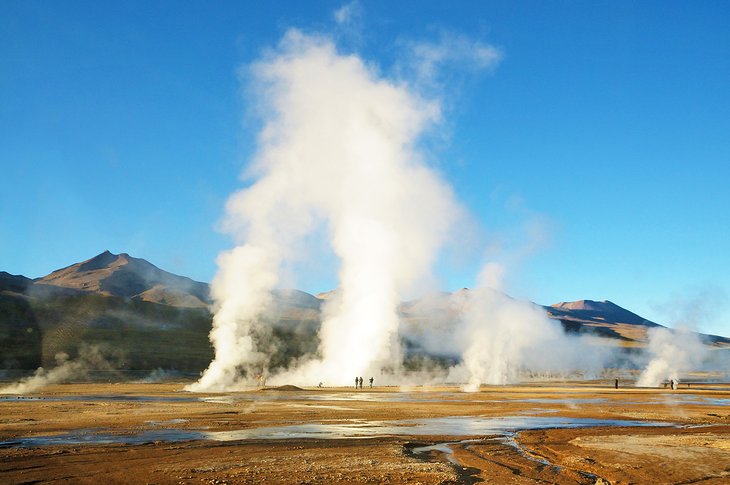
El Tatio geysers are the largest geyser field in the Southern Hemisphere. While they're not particularly tall, the sheer number of them (about 80) packed together make for an impressive sight. Sitting at the foot of a series of volcanoes on the border between Chile and Bolivia, the geysers are a photographer's dream.
Cape Horn
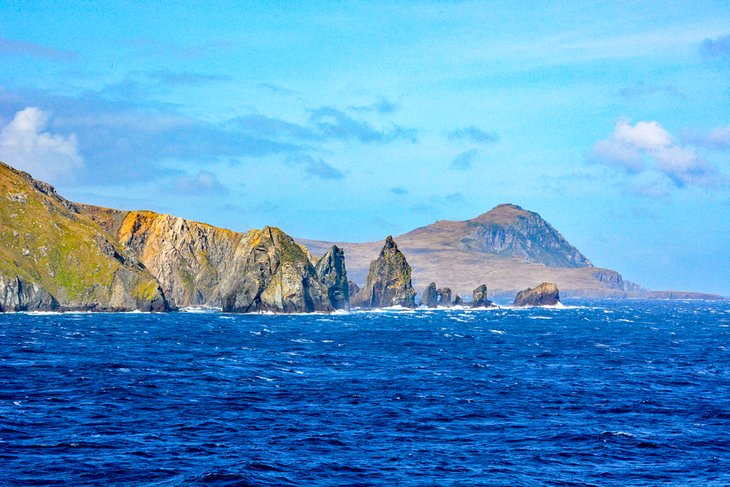
Located in Chile's Tierra del Fuego archipelago, Cape Horn is infamous for its rough waves, massive icebergs, and strong winds that make navigating the waters here very treacherous. Cape Horn is also the point where the Atlantic and Pacific Oceans meet, offering uninterrupted views over the water and the ice around.
Lake Chungara and Parinacota Volcano
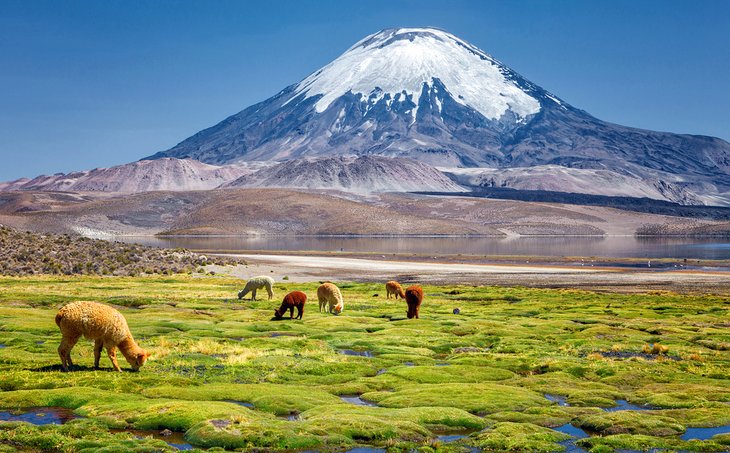
Parinacota Volcano is actually in Bolivia, but the best views of what has been called "one of the most beautiful volcanoes in the world" are from Lake Chungara in Chile. Located inside Lauca National Park, the lake sits at an impressive elevation of 4,517 meters, making it one of the highest lakes in the world.


